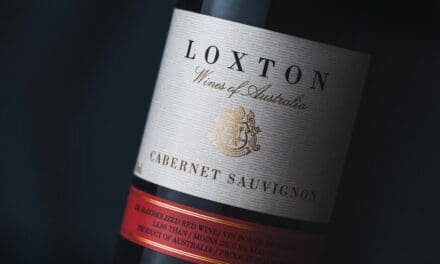Non-alcoholic wine is a wine from which the alcohol has been removed. It undergoes the same production process as regular wine, with one additional step to extract the alcohol.
Winelovers and retailers also refer to non-alcoholic wine as alcohol-free or dealcoholized wine. In this article, we will discuss how alcoholic wine is made, how it tastes, and what its advantages over regular wine are.
Is Non-Alcoholic Wine the Same as Grape Juice?
Non-alcoholic wine and grape juice are not the same beverages. Grape juice is simply the extract of grapes that are crushed and pressed. But non-alcoholic wine undergoes a complex production process that is very similar to regular winemaking. It includes fermentation and, in many cases, barrel-aging. Finally, the alcohol is extracted.
During this production process, most of the sugar that makes grapes and grape juice sweet is transformed into alcohol. So, alcohol-free wine is less sweet than grape juice. It also develops many more aromas and flavors that grape juice doesn’t have.
WHEN WAS NON-ALCOHOLIC WINE INVENTED?
Non-alcoholic wine was invented in 1908. So although wine has been around for thousands of approximately 8000 years, non-alcoholic wine is a relatively young beverage. Its invention is credited to the Jung family, who owned a vineyard in the Rhine region in Germany.
Johann Jung, born in 1798, was not only a vintner but also a cooper. He taught everything about his crafts to his son Carl who took over the family business and founded the Carl Jung company in 1868. While Carl focused on winemaking, his wife Maria traveled all over Germany to sell their wines to wealthy customers.
Over the years, she realized that more and more customers stopped ordering because their doctors advised them to consume less alcohol. When she told about these experiences at home, another member of the Jung family got involved: Carl and Maria’s mutual son Carl Junior. He started experimenting with his father’s equipment to find a way to make non-alcoholic wine. And he was successful: In 1908, Carl Jung jr. filed a patent for his de-alcoholization process.
Since then, the process has been improved continuously, and today, it’s one of the world’s most advanced techniques for making non-alcoholic wine.
WHAT IS NON-ALCOHOLIC WINE MADE OF?
Just like regular wine, non-alcoholic wine is made of grapes. Vintners use all kinds of red and white varietals to make alcohol-free wines.
HOW NON-ALCOHOLIC WINE IS MADE
The process of making non-alcoholic wine is not very different from regular winemaking. It consists of the same steps:
- Vintners grow the grapes and harvest them as soon as they reach the optimal sugar and acidity level.
- After the harvest, they crush the grapes. Depending on the desired style of wine, they either remove the grape solids (skins, stems, seeds) or leave them in the must.
- Next, they ferment the grape juice. During fermentation, the grape sugar turns into alcohol. If the goal is to make a sweet wine, the vintners stop the fermentation early, so there is plenty of residual sugar left. In case, they want to produce a dry wine, they wait until all sugar has transformed into alcohol.
- Many wines undergo an aging period after that. They spend time in oak barrels, where they slowly mature. That means they develop new aromas, their tannins soften, and they become more balanced in taste.
At this point, vintners bottle regular wines. For non-alcoholic wines, they have to perform an additional step before bottling: extracting the alcohol. To remove the alcohol, winemakers have three different options.
Method 1: Distillation
The first way to produce non-alcoholic wine is distillation. Vintners heat the wine to the temperature where the alcohol evaporates, so they can simply extract it. Unfortunately, heating the wine causes it to oxidize, and oxidation can lead to very unpleasant flavor changes.
To avoid this issue, vintners perform the distillation in a vacuum. Inside a vacuum, alcohol’s boiling temperature decreases, so winemakers can distill their wines at much lower temperatures without the risk of ruining them.
Method 2: Reverse Osmosis
The second method to extract alcohol from wine is reverse osmosis. During this process, vintners use high pressure instead of heat to achieve their goals. They force the wine against a membrane, a very thin physical barrier. This barrier functions as a filter that separates water and alcohol from the wine’s aromatic components.
Next, the vintners distill the mix of water and alcohol to remove the alcohol. And finally, they reunite the remaining water with the aromatic components. As the water volume is lower than the alcohol-water mix, they typically add more water to get to the proper proportions.
Method 3: Spinning Cones
The third way to make non-alcohol wine is the spinning cone technology. Vintners put their wine into a column of cones that spin at a very high speed. These movements create centrifugal forces that transform the wine into a thin film. Next, nitrogen gas is pumped into the column. This gas extracts the aroma components from the wine, which are stored in a separate tank.
The remaining mix of water and alcohol runs through the spinning cone column again. But this time, the vintners increase the temperature inside the column. This second run-through separates the water from the alcohol so that the vintners can extract the alcohol. Finally, they remix the water with the aroma components to create a non-alcoholic wine.
WHAT DOES NON-ALCOHOLIC WINE TASTE LIKE?
One of the most interesting questions regarding non-alcoholic wine is about taste. And nonalcoholic wine actually provides different sensations than regular wine with alcohol. Ethanol (the specific type of alcohol used in beverages) does not have a distinct flavor, though. Just like water, it is rather neutral in taste.
However, alcohol changes a wine’s mouthfeel, also known as the wine body. The more alcohol wine has, the heavier and more viscous it feels. Logically, alcohol-free wine is thin and has a light mouthfeel.
Besides, alcohol transports flavors. That means that wine without alcohol tends to taste less intense than a similar wine with alcohol, even when they’re made from the same grapes variety and feature the same aromas.
HOW LONG DOES NON-ALCOHOLIC WINE LAST?
Alcohol is a preservative and helps keep the wine fresh. A non-alcoholic wine lacks this preservative, so it does not last as long as regular wine. Nevertheless, a sealed bottle stored in perfect conditions can last for a few years.
Once opened, you should finish a bottle of non-alcoholic wine quickly. If you don’t want to drink it completely on the same day, reseal it, put it into the fridge, and finish it within two to three days.
BENEFITS OF NON-ALCOHOLIC WINES
There are several reasons to prefer non-alcoholic over regular wine. These are the main reasons:
- Obviously, non-alcoholic wine does not make you drunk. At least not as quickly as regular wine. Be aware that non-alcoholic wines are not entirely free of alcohol. Most have a tiny bit left because the extraction process cannot get it out completely. That also means that non-alcoholic wine is not a great solution for people who recover from alcohol addiction.
- Non-alcoholic wine has fewer calories than regular wine. More specifically, it has only between 30 and 50% of the calories that wine with alcohol from the same varietal has. So, if you are on a diet, non-alcohol wine is the better choice. Non-alcoholic wine usually has more residual sugar than regular wine, though. Thus, for a person with diabetes, it might not be the safest drink.
- Alcohol is a problem for people who suffer from reflux or high blood pressure. Logically, these people tend to tolerate non-alcoholic wine better than regular wine.
FINAL WORDS
To you as a wine lover, non-alcoholic wine might not appear very attractive at first sight. And for a long time, it was actually inferior to regular wine. However, you can find many great alcohol-free wines nowadays. And if you’re on a diet or simply the designated driver of the day, they are definitely worth trying.






